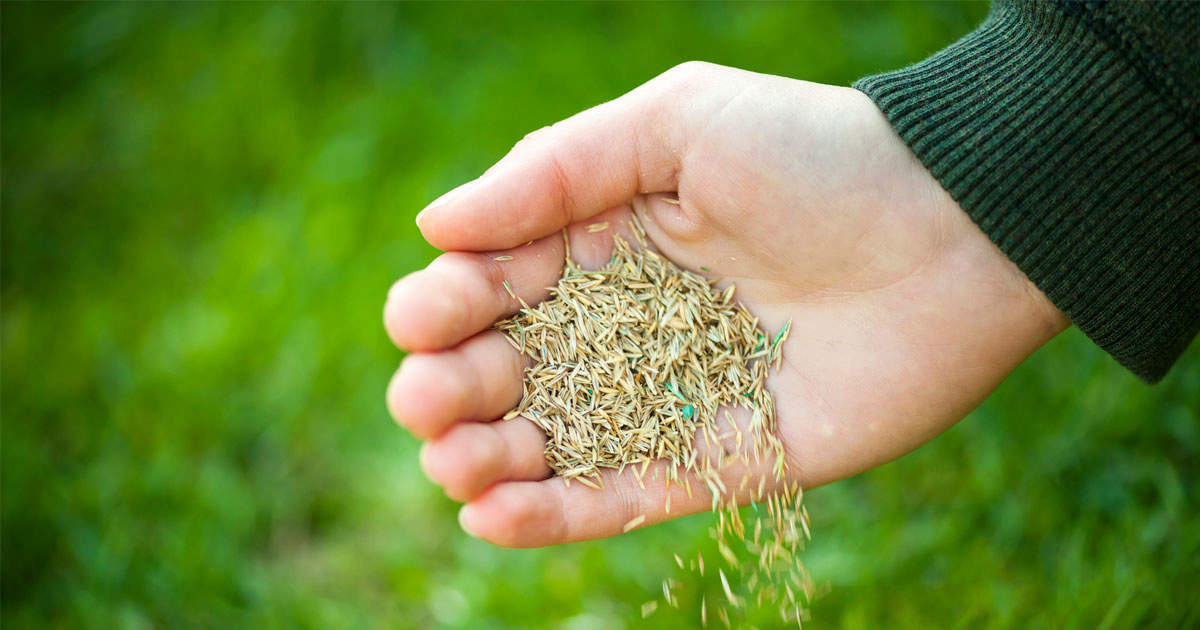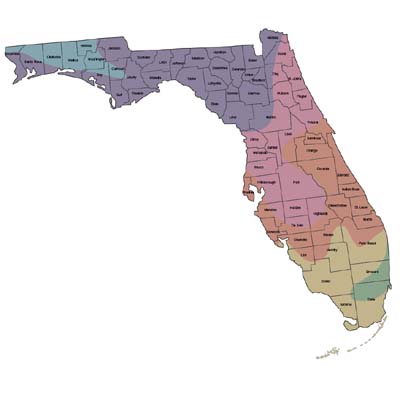If you want a lush, green lawn in North Florida, knowing the best time to plant grass seeds is key. Plant too early or too late, and you might face poor germination, wasted seeds, and extra work.
But when you plant at the right time, your grass has the perfect chance to take root, grow strong, and transform your yard into a vibrant outdoor space. You’ll discover exactly when to plant grass seeds in North Florida and how to give your lawn the best start possible.
Keep reading to make sure your lawn thrives all year long!
Climate Impact On Grass Growth
North Florida’s climate plays a key role in grass growth. Understanding the climate helps pick the best grass type and planting time. The region has warm summers and mild winters. Rainfall varies through the year, affecting soil moisture. These factors influence how well grass seeds grow and establish.
Choosing the right grass for North Florida’s climate improves lawn health. Timing the planting with temperature and rain patterns boosts seed germination and growth. Proper care during different seasons ensures a green, lush lawn all year.
Warm-season Vs Cool-season Grasses
Warm-season grasses thrive in hot weather. They grow fast in spring and summer. Examples include Bermuda, St. Augustine, and Zoysia. These grasses go dormant in cooler months but survive mild winters well.
Cool-season grasses grow best in cooler temperatures. They flourish in fall, winter, and early spring. Examples are fescue and ryegrass. These grasses struggle in North Florida’s hot summers and may need extra care.
Warm-season grasses suit North Florida better. They handle heat and humidity and recover quickly from stress. Planting warm-season grass seeds in late spring or early summer gives them time to grow strong before winter.
Temperature And Rainfall Patterns
Temperature in North Florida rises steadily from spring to summer. Soil warms up, which helps grass seed sprout faster. Ideal soil temperature for warm-season grass seed is 65°F to 75°F. Planting during this period improves germination rates.
Rainfall peaks in summer with frequent showers. This natural moisture helps keep soil damp for seed growth. However, heavy rains can wash seeds away if not planted carefully. Light, consistent watering helps maintain moisture during dry spells.
Cool-season grasses prefer cooler soil temperatures, around 50°F to 65°F. This means planting in fall or early winter suits them better. Rain is less frequent in cooler months, so watering may be needed to support seedling growth.

Credit: growtrax.com
Optimal Planting Months
Choosing the right time to plant grass seeds in North Florida is key for a lush, green lawn. North Florida’s warm climate allows for several planting windows. Each season brings unique benefits and challenges. Understanding these can help you get the best results from your lawn care efforts.
Spring Planting Benefits
Spring offers warm soil and longer days. Seeds germinate quickly in these conditions. The risk of frost is low, protecting young grass. Spring rains help keep the soil moist. This natural watering reduces the need for extra irrigation. Grass planted in spring has time to establish before summer heat. A strong root system grows during this period. It helps the lawn survive dry, hot months.
Summer Seeding Considerations
Summer planting is possible but requires care. High temperatures can stress new grass seedlings. Frequent watering is essential to keep seeds moist. Avoid planting during the hottest weeks. Choose heat-tolerant grass types for better success. Mulching helps retain soil moisture and cool the roots. Watch for pests that may increase in summer. Proper care can lead to a healthy lawn despite the heat.
Fall Planting Challenges
Fall planting faces cooler nights and less sunlight. Grass may grow slower due to these conditions. Early frost can damage young seedlings. Soil moisture can be inconsistent in fall. Extra watering might be needed to maintain dampness. Fall is not ideal but can work with careful management. Preparing the soil well before planting improves chances. Choose grass varieties suited to cooler weather for best results.
Selecting The Right Grass Type
Selecting the right grass type is crucial for a healthy lawn in North Florida. The climate here is warm and humid, with hot summers and mild winters. Choosing a grass that thrives in these conditions ensures your lawn will grow strong and stay green. Different grass types suit different soil, sunlight, and water availability. Knowing which grass fits your yard helps reduce maintenance and water use. This section covers popular turfgrass varieties, their drought tolerance, and maintenance needs.
Popular North Florida Turfgrass Varieties
Bermuda grass is common in North Florida. It grows fast and handles heat well. St. Augustine grass is also popular for its shade tolerance and thick growth. Zoysia grass grows slowly but forms a dense, soft lawn. Centipede grass needs less fertilizer and fits well in sandy soils. Bahia grass is hardy and drought-resistant but less soft underfoot. Each grass type suits different lawn styles and care levels.
Drought And Heat Tolerance
Heat and drought are challenges in North Florida summers. Bermuda grass handles heat and drought very well. St. Augustine grass tolerates heat but needs more water. Zoysia grass can survive dry spells but grows slower in drought. Centipede grass is moderately drought-tolerant but prefers moist soil. Bahia grass is the best for drought, surviving long dry periods with little care. Choosing drought-tolerant grass saves water and keeps lawns green.
Maintenance Requirements
Bermuda grass needs frequent mowing and fertilizer for best results. St. Augustine grass requires regular watering and pest control. Zoysia grass needs less mowing but may take time to fill bare spots. Centipede grass is low-maintenance with minimal fertilizing and mowing. Bahia grass needs little care but may produce more thatch. Understanding maintenance helps pick the right grass for your time and effort.
Preparing Your Lawn For Seeding
Preparing your lawn for seeding is essential to ensure strong grass growth. Taking time to prepare the soil and clear the area sets the stage for healthy turf. Proper preparation helps seeds make good contact with the soil and improves germination rates.
Soil Testing And Amendment
Start by testing your soil’s pH and nutrient levels. Soil in North Florida often needs adjustments to support grass growth. Use a simple soil test kit or send samples to a local extension office. Add lime if the soil is too acidic or sulfur if it is too alkaline. Incorporate fertilizers based on test results to provide essential nutrients. Proper soil balance helps grass roots develop deeply and evenly.
Removing Debris And Weeds
Clear the lawn of leaves, sticks, and old grass clumps. Remove all weeds to reduce competition for nutrients and water. Pull weeds by hand or use a weed killer safe for lawns. A clean surface prevents seeds from being blocked and stops weeds from taking over. This step also improves seed-to-soil contact, which is vital for sprouting.
Loosening And Leveling Soil
Loosen the top 2 to 3 inches of soil using a rake or garden tiller. This helps seeds settle into the soil and absorb moisture easily. Break up any hard clumps to create a smooth surface. Level the area to avoid water pooling and uneven growth. A flat and loose seedbed encourages uniform grass coverage and healthy root development.
Seeding Techniques For Success
Planting grass seeds in North Florida requires careful seeding techniques for best results. Proper methods improve germination and ensure a healthy lawn. Following simple steps can prevent common problems like poor growth or seed loss. Focus on even seed distribution, proper seed coverage, and protecting seeds from birds and wind. These help your grass thrive in the warm North Florida climate.
Even Seed Distribution
Spread seeds evenly across the planting area. Avoid clumps or bare spots by using a seed spreader or hand broadcasting. Even distribution helps grass grow uniformly without crowded or sparse patches. Walk slowly and overlap your passes to cover every inch. This gives all seeds equal access to soil, sunlight, and water.
Proper Seed Coverage
Cover seeds lightly with a thin layer of soil or compost. About a quarter inch of coverage is enough to protect seeds while allowing them to sprout. This layer keeps seeds moist and prevents drying out. Avoid burying seeds too deep, or they may struggle to reach the surface. Raking gently after seeding can help mix seeds into the soil.
Protecting Seeds From Birds And Wind
Birds can eat exposed seeds quickly. Wind can blow them away before they settle. Use a light mulch or straw to shield seeds without blocking sunlight. Netting or garden fabric also works to keep birds off. Watering right after seeding helps settle seeds into the soil and reduces loss from wind.
Watering And Care After Planting
Proper watering and care are essential after planting grass seeds in North Florida. Seeds need consistent moisture to sprout and establish strong roots. Without enough water, seeds dry out and fail to grow. Too much water can cause seeds to wash away or rot. The goal is to keep the seedbed moist but not soaked. This balance helps young grass seedlings grow healthy and green.
Keeping Seedbed Moist
Keep the soil surface damp at all times. Use a fine spray or gentle watering to avoid washing seeds away. Moist soil helps seeds absorb water and begin germination. Check the seedbed twice daily during hot weather. Light watering multiple times a day is better than one heavy watering. Avoid letting the soil dry out completely, or seeds will die.
Watering Frequency Tips
Water seeds lightly two to three times daily for the first two weeks. Early morning and late afternoon are best times. This prevents water evaporation and allows seeds to soak up moisture. After seedlings appear, reduce watering to once daily. Gradually water less often as grass grows stronger. Adjust watering based on rainfall and temperature changes.
Avoiding Overwatering
Too much water can harm seeds and seedlings. Avoid puddles or standing water on the seedbed. Overwatering causes seeds to rot and soil to become compacted. Compacted soil prevents roots from growing deep. Use a timer or watering tool to control water amount. Watch for soggy spots and reduce watering if needed. Proper drainage helps keep soil healthy.
Troubleshooting Common Issues
Troubleshooting common issues helps ensure your grass seeds grow well in North Florida. Problems like poor germination, soil compaction, pests, and diseases often stop grass from thriving. Knowing how to fix these issues can save time and effort. This guide covers key problems and simple solutions.
Poor Germination Causes
Poor germination happens when seeds fail to sprout or grow slowly. Seeds need good soil contact and moisture to start growing. Planting seeds too deep or too shallow can stop growth. Dry soil or heavy rain can wash seeds away. Also, planting at the wrong time reduces germination rates. Use quality seeds and prepare soil well for better results.
Dealing With Soil Compaction
Soil compaction stops roots from growing deep. Hard soil holds less air and water. This makes it hard for grass to survive. To fix this, loosen soil with a rake or aerator before planting. Adding organic matter like compost improves soil texture. Avoid walking on new seedbeds to keep soil soft. Proper soil helps grass roots grow strong and healthy.
Pest And Disease Management
Pests and diseases damage young grass and slow growth. Common pests include insects like grubs and chinch bugs. Fungal diseases cause spots or mold on grass blades. Inspect your lawn regularly for signs of damage. Use natural pest control methods or approved treatments. Keep grass healthy with proper watering and mowing to reduce disease risks.

Credit: www.pennington.com
Cost-effectiveness Of Seeding Vs Sod
Choosing between seeding and sodding affects your budget and lawn quality in North Florida. Each method has unique costs and benefits. Understanding these helps you pick the most cost-effective way to grow your lawn.
Initial Investment Comparison
Seeding requires buying grass seeds and soil prep tools. Seeds cost less upfront than sod rolls. Sod has a higher price because it is already grown and ready to install. Labor for sod installation may add to costs. Seeding needs less initial money but more effort.
Long-term Maintenance Costs
Seeded lawns may need more watering and care early on. Sod lawns establish quickly and resist weeds better. Over time, seeded lawns might require more reseeding or patching. Sod lawns usually need less maintenance but may cost more to repair if damaged. Both need regular mowing and fertilizing to stay healthy.
Time To Lawn Establishment
Seeds take weeks to sprout and form a full lawn. During this time, extra watering and protection are crucial. Sod provides instant green coverage and usable lawn space. Sod roots grow into the soil within two weeks. Seeding is slower but cheaper, while sod offers quick results at a higher cost.

Credit: www.outsidepride.com
Frequently Asked Questions
When To Plant Grass Seed In Northern Florida?
Plant grass seed in northern Florida between April and July for optimal warm-season grass growth before cold weather arrives.
Is October 1 Too Late To Plant Grass Seed?
October 1 is often late for planting grass seed in many regions. Cool-season grasses can still establish if soil stays warm. Warm-season grasses may struggle due to cooler temperatures. Prepare soil well and keep seeds moist for better germination and growth success.
Can I Just Throw Grass Seed Down And It Will Grow?
Grass seed may grow if thrown on soil, but germination is low without proper soil contact or coverage. Lightly cover seeds with soil or compost to protect them, retain moisture, and improve growth. Keep the area moist until grass establishes for best results.
Is April Too Early For Grass Seed?
April is a good time to plant warm-season grass seeds in most areas. Soil warms, promoting germination. Water consistently for best results.
Conclusion
Planting grass seeds in North Florida works best from April to July. This timing helps seeds grow well before cooler months. Prepare the soil by loosening it and covering seeds lightly. Water the area regularly to keep seeds moist and safe.
Taking these steps improves your lawn’s chance to thrive. Start planting at the right time for a healthy, green yard. Patience and care bring the best results for your lawn.

